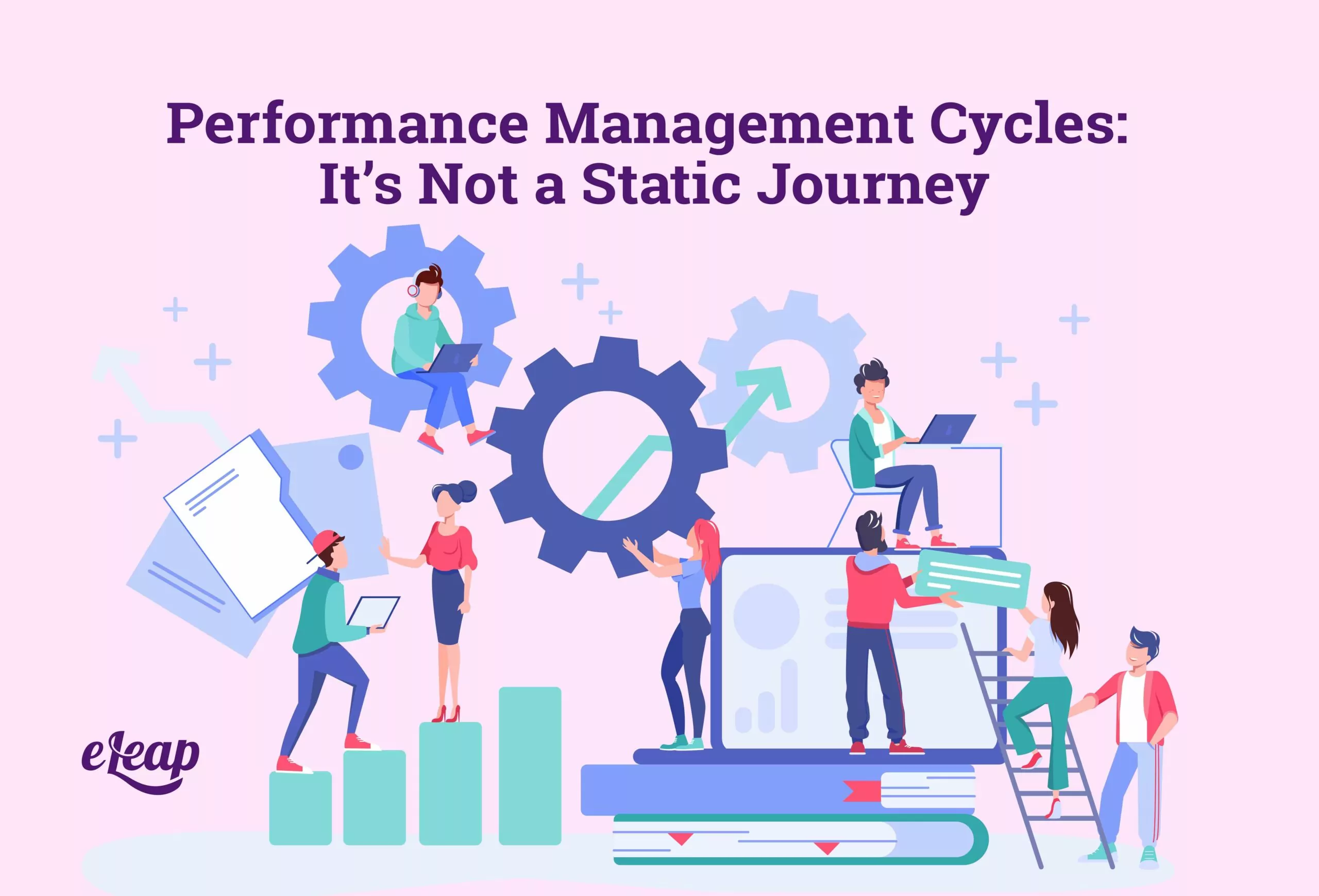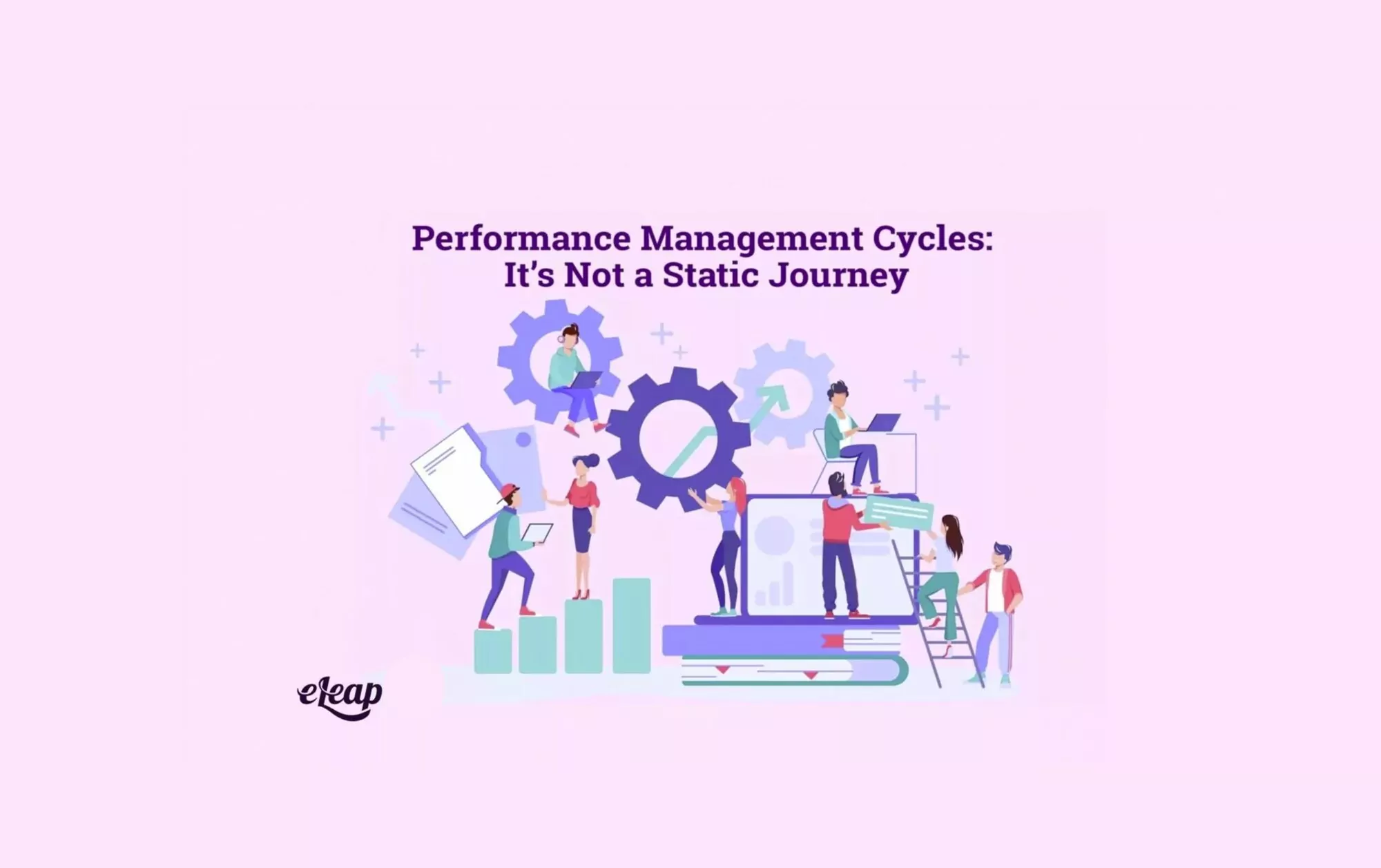Performance Management Cycles: It’s Not a Static Journey

The traditional performance management model dates back as far as the 1950s when Peter Drucker proposed the idea of Management by Objectives, or MBO. This concept proposes that organizational and individual goals need to be aligned and that it is the responsibility of management to ensure that happens. It’s not always easy to achieve, Drucker notes, but it is a good goal to keep in mind to start the performance management process on the right foot.
Companies talk a lot about old times versus new. The biggest difference, as is the case here, is the change in mentality that performance, learning, and development are journeys and should be treated as such. In the past, many companies created a forced “performance management” cycle that was more like a jarring start-and-stop process without much flow. Not only that, but the outdated annual review model often feels like a standalone judgment day to employees, and it still keeps many people from making changes and improvements because of the way feedback is offered.

Performance Management as a Journey
Just as your employees have training and onboarding journeys, they are also going to have career development journeys and other experiences as part of your organization. Defining the phases and stages of performance management will help everyone get a better understanding of how the PMS platform can be used to improve things for all employees, leaders, and the organization as a whole.
Essentially, performance management can be broken down into a four-stage journey.
- Planning: This is where goals are set, metrics are defined, and a plan is made to ensure that employee performance is on point at all times.
- Monitoring: Once the goals are in place, real-time, ongoing monitoring needs to occur. This will help determine if there are areas where performance is lacking or if improvements can be made.
- Employee Development: Now, the employees can use this information to upskill themselves and improve their performance.
- Reward/Rating: This is where the employee can sit down with management and go over their performance, getting the appropriate rating or reward based on their outcomes.
As stated, many organizations used to make this a year-long effort ending in a show of a performance review that was reactive instead of proactive, and that’s no longer effective.
Continuous Performance Management is the Future
Employees want better cultures. They want better engagement. They want to feel like a valued member of the organization and they expect to have the tools and resources to help them do that. One of the biggest shifts in the way people work and monitor their success is the adoption of the continuous improvement model. This allows ongoing learning and development to happen in real-time and ensures that employees don’t spend six months doing their job incorrectly only to find out in an annual review when they could have rectified the situation much sooner.
Working with a dedicated PMS provider will help you create a better performance management cycle for your organization. You will also want to consider an agile approach that allows you to help people develop in the flow of business, not just through static learning and training opportunities. Just as organizations need to embrace agile for their processes and productivity, it’s also going to be integral to performance management and employee development.
Continuous means ongoing. That means your organization will need to check in with people monthly, weekly, or even daily to ensure that the goals are being met and that employees are on the right track to continue to improve their work and their capabilities within their professional roles. Shared responsibility is a key element here, and employers need to make sure that employees are ready and willing to share the work.
Active vs. Passive Monitoring
In line with the real-time expectations of employees, it’s now important to integrate an active monitoring and management system to keep tabs on your team. Active means engaged, actionable, and ongoing. It’s a way to constantly monitor results, help people take ownership of their roles and their own professional development, and more.
When you hand people a page that lists the shortcomings and metrics from the past year, you’re handing them a lot of things that could have already been adjusted. You’re looking at static information on paper and trying to make plans and goals based on that information. You probably have monitoring and management tools in place, but you don’t engage with them often. You simply gather the reports and go back to what you were doing. That’s not going to work anymore (and quite frankly, it never really did).
Fortunately, today’s tools ensure that all organizations can actively monitor performance and development, no matter what kind of business they’re in or what their budget for a PMS and other tools looks like. Take an active role in your company’s performance management and watch how quickly things shift in your favor.
Pay Special Attention to the Rewards
Today’s employees are not going to tolerate being treated like a machine or another number. They want special attention, and they want to feel like a part of something. If you create a good company culture, all of this will occur on its own. However, you have to get it started. Think about the types of rewards and recognition that you can offer to your team. It could be as simple as a “good job” or even a day off, a party to celebrate a successful launch—the options are endless. Of course, if it’s a big reward situation, a raise or promotion could also be in order.
Whatever it is, make sure that you’re rewarding people for their performance. That will help you speed up the cycle of performance management and employee development, and it will create a culture of employees who feel valued and appreciated. And while there is a lot that companies can do to outpace the competition these days, that culture is often what will make or break their success.